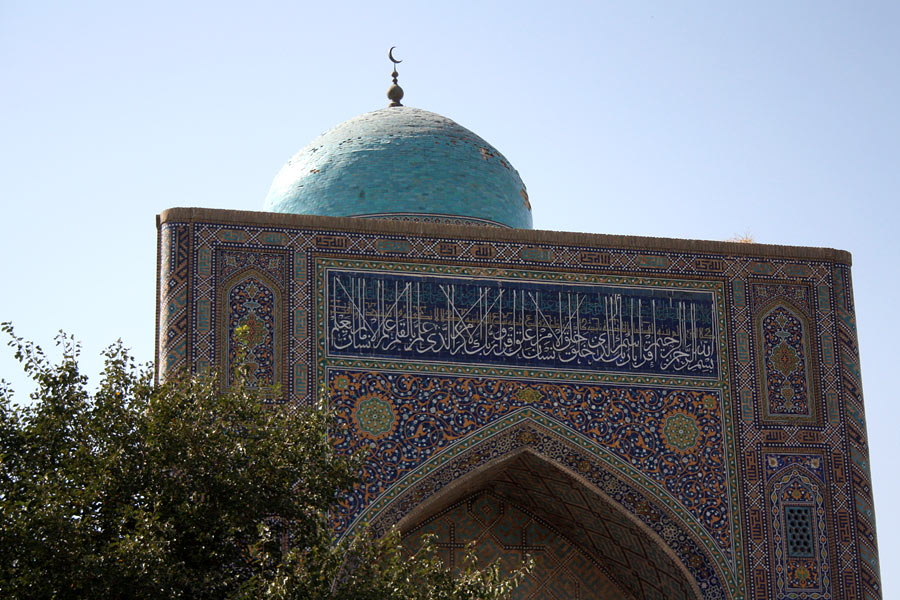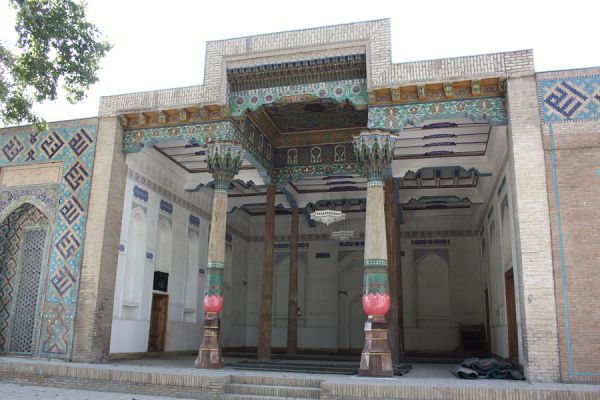The Khoja-Ahrar Ensemble
Sheikh Khoja Ahrar Wali lived in Samarkand in the 15th century. He was one of the respected ideological thinkers of the main branch of the Naqshbandi Sufi order, which had influence in the countries of Central Asia, India and Western Turkey.
Most of the rulers of that era revered Ahrar as their spiritual mentor, and the rulers of the states treated him with respect and reverence. Thanks to the efforts of Khoja Ahrar, the burdensome and unfair taxation system was abolished in the vast territory of the Mavveronnahr region. The Honorable Akhrar is rightly considered to have prevented the brutal bloodshed that could have occurred due to the brewing conflict between the three rulers of Ferghana, Samarkand and Tashkent.
Khoja Akhrar lived a long life filled with a spiritual mission, leaving this mortal world at the age of 86. Akhrar's body was buried in a cemetery located in the suburbs of Samarkand. Streams of believers immediately flowed into this place, which has become sacred to Muslims. The white marble tombstone on the grave contains epitaphs carved into the stone in poetic form.
Two centuries after the death of Khoja Akhrar, the ruler of Samarkand, Nodir Divan-begi, by his decree ordered the construction of a mosque and madrasah near the burial of Akhrar. Externally, the madrasah building was a mirror image of the Sherdor Theological College, located on the famous Registan Square in Samarkand. But unfortunately, the originality and beauty of the Khoja Akhrar complex was not preserved due to the large number of earthquakes that occurred in these lands. Due to the movements of the earth's crust, the upper part of the madrasah building tilted, and all the decoration fell off the walls. Due to such a deplorable state of the structures, it was decided to reconstruct the entire ensemble.
After completing the main restoration work, it is time to finish the front facade of the madrasah building. But it turned out that not a single fragment of the original wall decoration had been preserved. The pious work of the famous scientist from Samarkand, Abdutohirkhoji, came to the aid of the masters, in which a description of the madrasah, which is part of the Khoja Akhrar ensemble, was found.
At the same time, searches were conducted in the Hermitage archive, which were crowned with success. Among the documents of the second half of the 19th century, several photographs depicting the Akhrar madrasah were found. Of course, time did not spare the paper, the pictures were worn, but this did not stop the restorers, painstaking work was carried out to restore the images. At the end of this hard work, it became clear that the decoration of the facades of the two madrasahs, Sherdor and Akhrara, are as similar as two drops of water. A real surprise for scientists was the discovery of an inscription in Arabic in the photo, captured above one of the doors located in the niche. A comparison of all the discovered facts led the researchers to the conclusion that both madrasah buildings were built under the supervision of the same master, Abdul-Jabbar.
The restored Khoja Akhrar complex still welcomes numerous guests and pilgrims who come to venerate the relics of Khoja Akhrar, read prayers, find peace and find answers to the many questions of existence.























